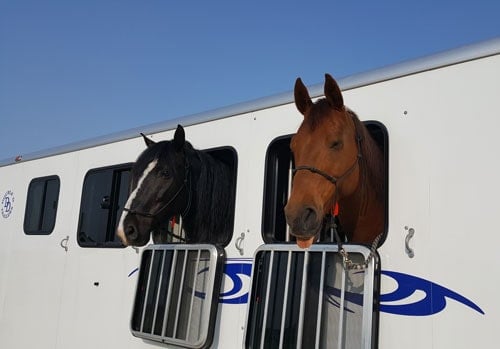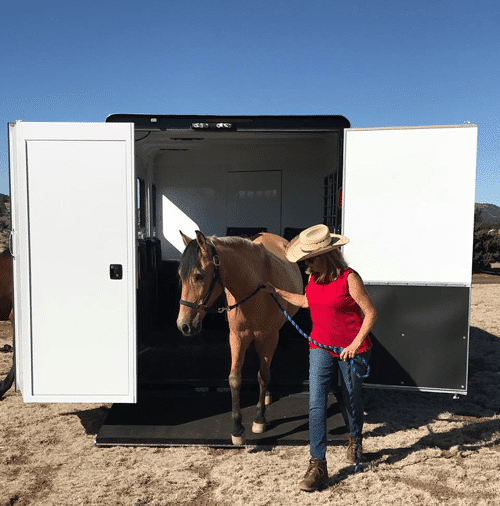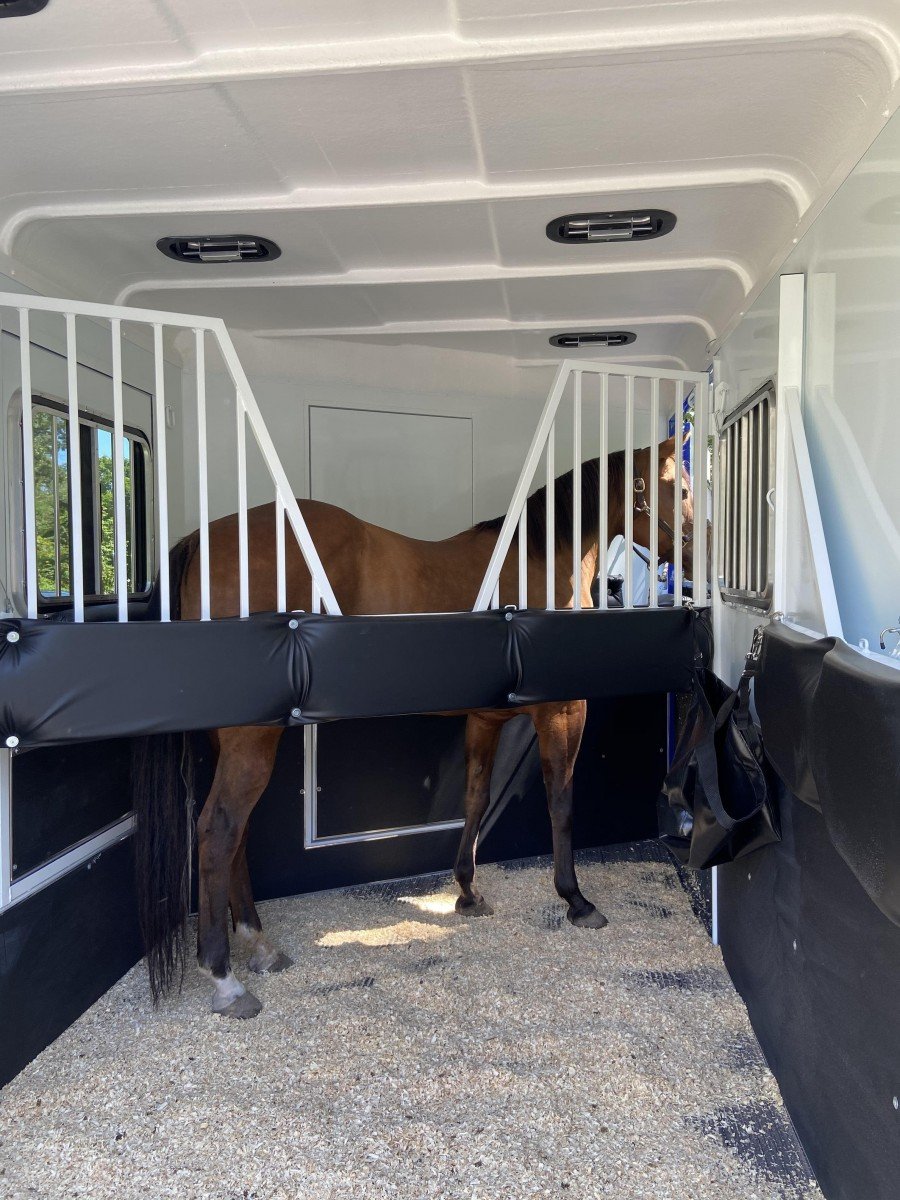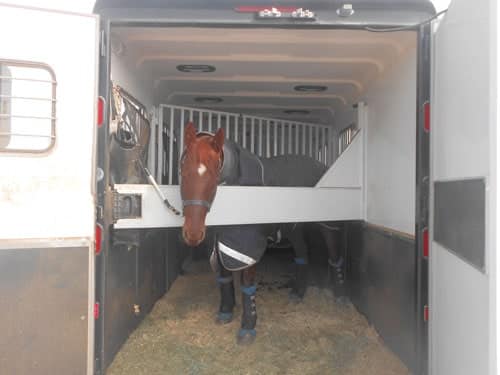The Complete Guide to Understanding Horse Body Language
As a horse owner, you might remember one of the first pieces of advice you ever got about horse body language. “If the ears are pinned back, stay away from that horse!”
Over the years, you’ve probably deepened your vocabulary of horse body language. You can recognize a happy horse from an angry horse. You know when your mare is annoyed with her pasture mate. And you very clearly know when your gelding is excited about feeding time.
Understanding horse body language is essential for any horse owner to build a stronger bond with their equine partner. In this article, we will delve into the intricacies of horse body language, decode common behaviors, and explore how we can use this knowledge to enhance our relationship with our horses.
How is a Horses Body Language Expressed?
Horses express their body language to humans in a variety of ways. They use their posture, facial expressions, tail and mane movements, and overall movements to communicate their mood and intentions. While we certainly can’t be “horse mind readers”, understanding the basics of how horses communicate with us through their body language is important.
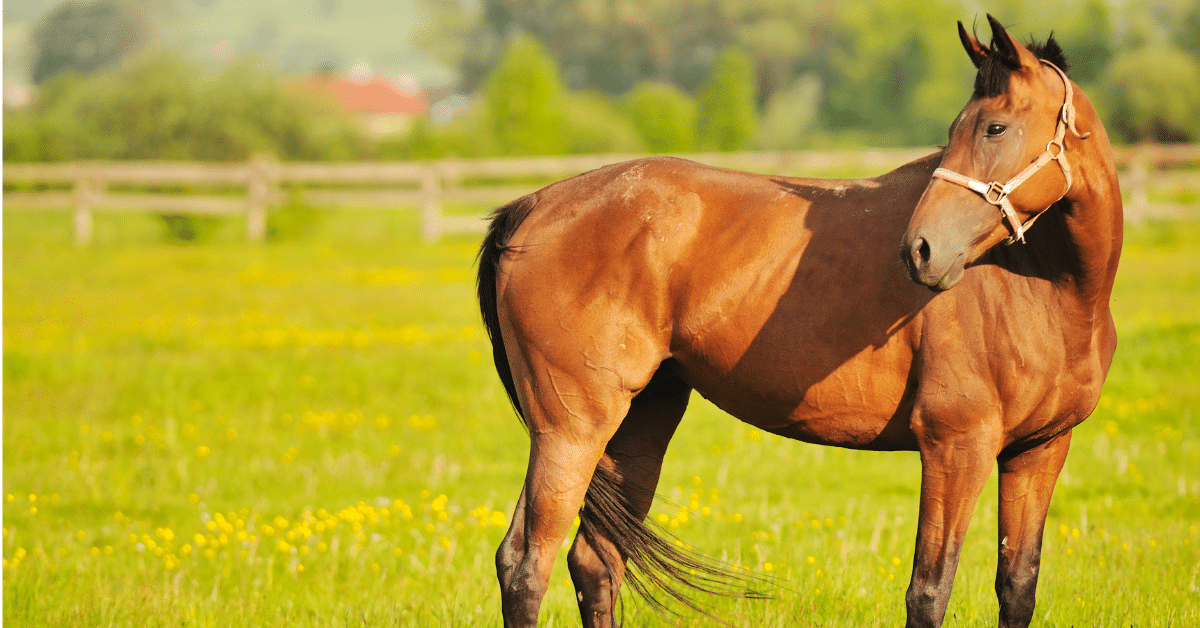
Facial Expressions and Positions in Horses
A horse's face can tell us a lot about how they might be feeling. A relaxed horse will have a lowered head, relaxed ears, and a weight balanced evenly on all four feet. They may even close their eyes and breathe deeply. In contrast, a horse that is agitated or nervous will have a tense body, raised head, and a weight shifted to their hindquarters. Their ear position will also be pinned back, and their eyes will be wide open, indicating a heightened state of alertness.
Here are a few common postures and facial expressions seen in horse body language, and what they typically mean:
-
Slightly forward ears: Relaxed horse
-
Exaggerated forward ears: Alert horse
-
Flattened ears: Agitated or upset horse
-
Quickly flicking ears: Alert or anxious horse
-
Darting eyes: Alert or anxious horse
-
Whites of the eyes showing: Upset horse
-
Flared nostrils: Aroused horse (could be fear, excitement, or curiosity)
-
Relaxed nostrils: Calm horse
-
Flehmen: Curious horse
-
Lowered head: Relaxed horse
-
Elevated head: Alert horse
-
Rapid head movements: Aggressive horse
-
Drooping lip: Relaxed horse
-
Tense jaw/mouth: Anxious horse
It's essential to note that a horse's posture and expression can change rapidly, especially in response to external stimuli. For example, a relaxed horse may become agitated if they hear a loud noise, see a predator, or encounter an unfamiliar object.
Horse Movements
Horses communicate through their movements, and understanding these movements is essential for interpreting a horses body language. A relaxed horse will move with fluid and rhythmic movements, indicating a calm and content horse. However, if a horse is agitated or nervous, their movements will become jerky and unpredictable. They may also paw the ground, stomp their feet, or rear up on their hind legs.
Tail and Mane
A horse's tail and mane can also reveal what’s going on inside their mind. A relaxed horse will have a low and flowing tail, indicating a calm and content horse. If a horse is nervous or fearful, (or even just extremely excited) their tail may be raised and tense, indicating a heightened state of alertness. However, if you notice that your horse is displaying a tail that is “clamped down”, this likely means that your horse is frightened or possibly in pain.
Understanding Horse Body Language While Loading Onto a Trailer
So, what about their body language when it comes to the horse trailer? Have you ever considered how their signs of nerves or frustration during loading indicate their wider feelings about traveling in the trailer? And have you ever considered that your choice of trailer design might be impacting their desire to load?
Why Are Horses Wary of Horse Trailers?
Traveling inside a closed box on wheels isn’t exactly a natural behavior for horses. In fact, walking onto a shaky metal trailer feels very unnatural for horses. As prey animals, they are hard-wired with an instinct for fight or flight. A horse trailer allows for neither.
That’s why it’s important for us to understand a horse’s body language as they are approaching, loading onto, and standing inside the horse trailer. This will give us an idea of their overall comfort level. A horse who is relaxed and happy will experience lower levels of stress during his travels.
The physical effects of stress for a horse include an elevated heart rate with the release of the stress hormone cortisol. Their bodies also release adrenaline and epinephrine in preparation for that flight away from “danger.”
Elevated levels of stress for long periods of time can decrease your horse’s immunity and their ability to combat infection. Over time, this may lead to problems like shipping fever – a respiratory infection.
A stressed out horse is also a very difficult – and perhaps unsafe – horse to load onto a trailer.
Signs of a Relaxed Horse
A horse who is completely relaxed around your horse trailer will have muscles and skin that lay smoothly across his body. His eyes will be soft and blinking without extra tension around the edges. His ears will be relaxed off to the sides or pointed forward paying attention to you. His mouth will be relaxed and you may even catch him with his bottom lip drooping low.
While standing, his legs will be still and relaxed with a back leg casually cocked. His neck will be down or level and his tail will be held low – swishing back and forth casually or just hanging in place.
This horse body language on display shows a horse that is completely comfortable with your horse trailer. He feels safe walking on and doesn’t perceive any threats. He has plenty of light to see and doesn’t feel too confined with the trailer’s configuration.
Signs of a Curious Horse
If your horse is acting just a bit too relaxed as you approach the trailer, you may need to get his attention with a twitch of the lead line or a pat on the side of the neck. Once you have his attention, he may show more signs of curiosity.
A curious horse looks similar to a relaxed horse, but more alert. His eyes will be bright and attentive. His ears will point forward and his mouth may tighten up. His nostrils will be sniffing or blowing gently.
Signs of a Stressed Horse
As you’re working with your horse and trailer, you may see signs of stress in your horse. Signs of stress should indicate to you that you take things a little bit slower. If things escalate, you may need to give your horse a break so he can calm down again. Be aware of your surroundings and don’t put yourself in a dangerous situation. A stressed horse does not act like “himself” when he’s scared.
A scared or stressed horse will back away from you or resist your attempts to control him. He may flick his ears backward or even pin them back flat against his head. He’ll grind his teeth in frustration and swish his tail with agitation. His lips will be tight and his eyes wide open.
He may lift his head high and paw or stomp his feet in frustration. Take care with a horse showing this kind of body language. He could easily injure you if you continue to push him.
Read more about loading and unloading an anxious horse.
Horse Trailer Features that Affect Your Horse’s Comfort Level
When we think about your horses body language and overall happiness while loading or traveling on a horse trailer, it makes sense to think about their natural instincts. Horses are pretty simple creatures in that they only want four basic things:
-
Light to see
-
Room to move
-
Air to breathe
-
Safety from threats
Light to See
The lightness of your horse trailer can be influenced by the size and positioning of the horse trailer windows. It also helps if your trailer is painted white on the inside to reflect the maximum amount of light. Look for tubular head dividers that allow your horse to see his trailer mates and more of his surroundings. Solid metal head dividers tend to make horses feel more claustrophobic.
Room to Move
Since horses have such a strong fight or flight instinct, they do not like to be confined in small spaces. That’s why enough room in your trailer to move around is a huge factor in your horse’s comfort level. Look for a trailer with a wide open loading door and individual stalls with enough space for their specific breed size.
Many conventional slant load trailers have a very narrow rear loading door positioned beside a stationary rear tack area. Instead, we recommend the SafeTack design with a tack area that swings out like a second door. This leaves a very wide loading area so the horse never feels confined or trapped.
Air to Breathe
Proper ventilation inside your trailer will help the horse feel more comfortable and also help them from overheating (and dehydrating as a result.) Look for a trailer that has windows which can be opened for extra air flow. Overhead air vents are also a great idea. The head dividers with tubular design help maximize air flow for your horse.
Plus, we generally recommend you stay away from horse trailers with mangers in the front. When horse’s inhale particulate matter, they need to lower their heads and snort to clear their airways. Mangers tend to hold dust from their hay right in their faces and prevent them from snorting out debris.
Safety from Threats
Safety from danger is the final core need for your horse. One of the biggest ways you can achieve this with a horse trailer is by choosing a quiet rivet-free design. When the inside of the trailer doesn’t rattle with every bump on the road, your horse will feel more relaxed during the drive.
Even something as simple as your type of flooring can reduce road vibration and give your horse a more peaceful ride. For flooring, we recommend treated pine timber or synthetic Rumber materials. Metal floors with rubber mats on top transfer much more noise, heat, and vibration up from the road surface.
Conclusion
The bottom line is: Every horse is different.
Understanding horse body language is essential for building a deeper connection with your animal. But, you know your horse better than anyone else. By constantly observing your horse's posture, expression, tail, mane, and movements, you can better understand what’s normal for them and be on the lookout for changes. You can also use this knowledge to communicate better with your horse and adjust your training and riding to their needs.
If you have any questions about how your trailer construction can affect your horse’s comfort level, drop us a line here. We’re happy to help you find the right type of trailer that works best with your horse’s breed and temperament.

